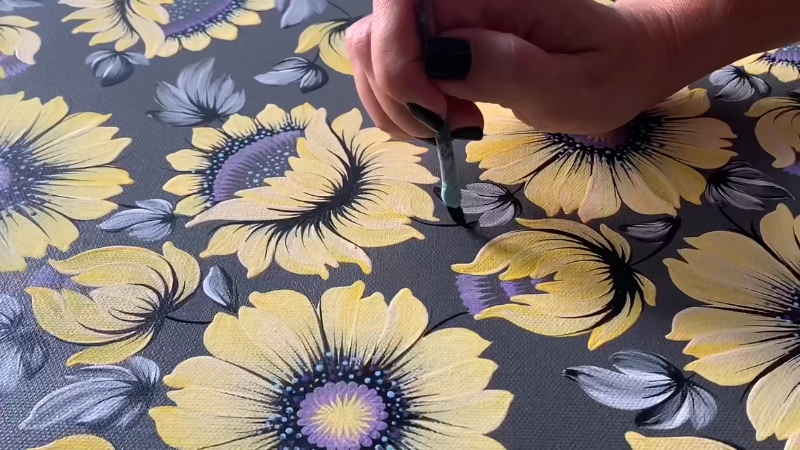Let’s get one thing out of the way—yes, new art styles pop up every year. Some vanish as quickly as they came, others redefine how we see the world.
So, why should you care about art genres with names like “Thinkism” or “Gan-ism”?
Because understanding them helps you see the world in new, bold, and sometimes unsettling ways.
Whether you’re an artist, collector, enthusiast, or just someone who wants to sound cool at gallery openings, this guide will keep you ahead of the curve.
1. Massurrealism
Feature
Details
Also Known As
Mass Media Surrealism
Origin/Inventor
James Seehafer, 1992
Key Features
Digital manipulation, surreal imagery, pop culture influence
Known For
Blending traditional surrealism with modern tech and media aesthetics
Notable Artists
Niyi Okeowo, Odion Tobi
Modern Relevance
Digital art, NFTs, Afrofuturism, contemporary media critique
Massurrealism is the artistic lovechild of Salvador Dalí and your Instagram feed—fusing the dreamlike essence of surrealism with the sharp, glossy sheen of mass media.
Born in the early 1990s by American artist James Seehafer, massurrealism started as a way to describe artworks that weren’t just surreal, but also deeply rooted in consumer culture, technology, and digital imagery.
What sets it apart is how it recontextualizes familiar elements—magazines, TV ads, social media graphics—into deeply introspective or disorienting pieces. Massurrealism reflects the visual noise of our digital age.
Think distorted selfies, glitchy backgrounds, and surreal color grading that makes everything feel like a hyper-dream.
View this post on Instagram
In Nigeria, Niyi Okeowo exemplifies this with projects like Hello, Mr. Colour, where vibrant textures and afro-futurist undertones meet surreal digital environments.
What makes mass surrealism powerful today is its relevance. It speaks to digital identity, overstimulation, and modern alienation. As more of our lives shift into virtual spaces, massurrealist art captures the strange emotional disconnection behind the glossy pixels.
2. Thinkism
Feature
Details
Also Known As
Art for Thought
Origin/Inventor
David Kam, 2001
Key Features
Philosophical themes, activism, eco-consciousness
Known For
Exploring man-made impacts, social justice, and ecological crises
Notable Artists
Otobong Nkanga
Modern Relevance
Activist art, climate justice, cross-disciplinary installations
Thinkism emerged not just as an art style, but as a reaction to global trauma. Born in the wake of the 9/11 attacks, Thinkism was introduced by artist and theorist David Kam as a movement that demanded more from art than beauty—it demanded consciousness.
At its core, Thinkism asks: What if art could be an act of thinking? Not just reflecting the world, but actively questioning, reimagining, and challenging it.
Thinkist works are deeply rooted in philosophical and social inquiry. They often draw upon themes like political corruption, climate change, spirituality, consumerism, and psychological trauma. The genre doesn’t belong to any one medium—it’s expressed through installation, sculpture, photography, and even literature.
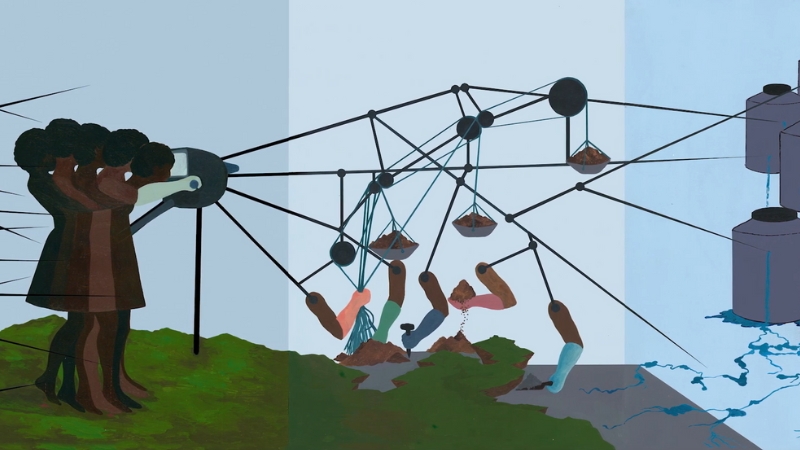
One of the most powerful contemporary examples is Otobong Nkanga, whose art explores how environmental degradation and capitalism affect people’s bodies and lives.
In her series Delta Stories, she maps the fallout of oil exploitation in the Niger Delta—tracing everything from violence to ecological collapse.
What makes Thinkism timely is its urgency. It blurs the boundary between artist and activist and insists that art should provoke, disturb, and enlighten. In today’s world of soundbites and scrolling, Thinkism invites you to pause and think.
3. Gan-ism (AI Art)
Feature
Details
Also Known As
AI-Generated Art
Origin/Inventor
Obvious Art Collective / GAN (Generative Adversarial Network)
Key Features
Algorithmic surrealism, digital blur, abstract faces
Known For
“Portrait of Edmond de Belamy”, surreal AI artworks
Notable Artists
Obvious, Mario Klingemann, Anna Ridler
Modern Relevance
NFTs, generative art, debates on authorship
Gan-ism is art created by machines—but it’s far from soulless. It’s unsettling, strange, and often emotional. It all began when the French art collective Obvious trained an AI system (a GAN, or Generative Adversarial Network) to create what would become the viral “Portrait of Edmond de Belamy.”
When that blurry, ghostlike portrait sold at Christie’s for over $432,000, the art world took notice—and debated.
So what exactly is happening here? The GAN consists of two neural networks: the Generator, which creates images, and the Discriminator, which judges them. Together, they learn to mimic patterns found in thousands of pieces of human-made art.
The result? Eerie artworks with half-formed faces, odd perspectives, and unsettling detail, almost like a dream caught in static.
While skeptics argue about whether this is “real” art, many artists embrace AI as a collaborator. Pioneers like Mario Klingemann and Anna Ridler are using AI not to replace creativity, but to expand it—blending human intuition with computational possibilities.
Gan-ism forces us to ask big questions: Who is the artist—the algorithm or the human who trained it? Can a machine understand emotion? Is originality even real in the age of infinite data? Regardless of where you stand, one thing is clear: AI art isn’t the future—it’s already here.
4. Interactive Installation Art
Feature
Details
Also Known As
Immersive Art, Participatory Art
Origin/Inventor
Emerged from 1960s Installation Art
Key Features
Viewer participation, tech-enabled response
Known For
Blending space, tech, and interactivity
Notable Artists
Karo Akpokiere, Bolatito Aderemi-Ibitola
Modern Relevance
VR, AR exhibitions, and museum experiences
Imagine walking into a room where the walls shift as you breathe, lights pulse with your heartbeat, and voices whisper back when you speak. Welcome to Interactive Installation Art—a genre that puts you in the driver’s seat.
Unlike traditional art, which is often passive and observational, interactive installations demand your involvement.
This genre evolved from Installation Art, which already focused on immersive, spatially-aware work. But interactivity introduced a new layer—using technology, motion sensors, virtual reality, or even AI to respond to the audience’s presence. It’s not just seen or heard—it’s experienced.
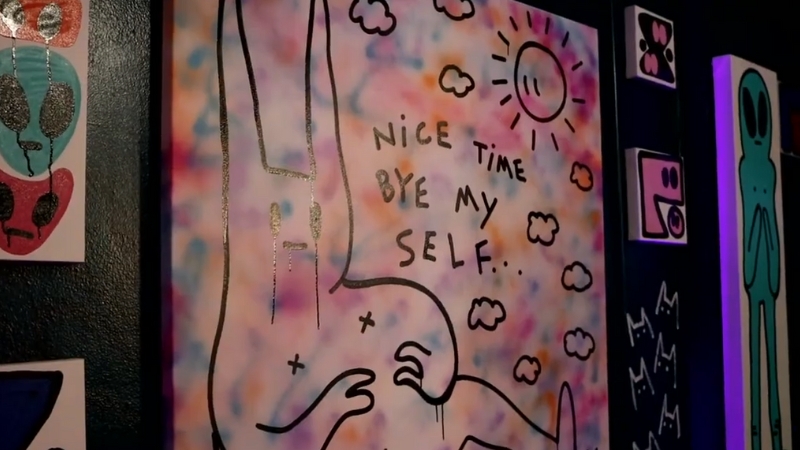
In Nigeria, Karo Akpokiere’s “Lagos Drawings” uses digital interaction to explore Lagos’ dynamic urban life, while Bolatito Aderemi-Ibitola’s “Scraps from Mama’s Floor” reimagines memory, home, and language through digital fragments and participatory elements.
This genre has grown alongside our relationship with tech. As AR and VR become more accessible, interactive installation art is redefining galleries, museums, and public spaces. It’s an art you don’t just look at—you live inside it.
5. Ecological Art (Eco-Art)
Feature
Details
Also Known As
Eco-Art, Environmental Art
Origin/Inventor
Emerged in the 1960s-70s, rooted in Land Art and Thinkism
Key Features
Focus on sustainability, environmental issues, and upcycling
Known For
Art made from recycled materials, site-specific ecological projects
Notable Artists
Dotun Popoola, Nnenna Okore, Olamide Babajide
Modern Relevance
Climate activism, waste-to-art movements, green design
Ecological art isn’t just about painting trees—it’s about protecting them. Rooted in the environmental movements of the 60s and 70s, Eco-Art seeks to restore, reveal, or intervene in natural ecosystems through creative expression.
The genre spans from delicate sculptures made of natural materials to bold installations crafted from urban waste.
But it’s more than just visual aesthetics—it’s activism. Eco-artists don’t simply depict environmental problems; they engage with them, often through collaborative, science-informed practices.
Some artists remediate polluted landscapes, while others turn discarded materials into powerful statements on sustainability.
Thank you for supporting the Nigerian art and artists, I appreciate you🙏🙏. https://t.co/iiEFlIMsPc
— dotun POPOOLA (@dotunpopoo) March 13, 2020
In Nigeria, Dotun Popoola turns scrap metal into vibrant animal sculptures, Olamide Babajide reimagines furniture using waste materials, and Nnenna Okore transforms trash into intricate woven forms that reflect cultural and ecological decay.
What makes Eco-Art vital is that it serves a dual purpose: it raises awareness and reduces waste. In an era of climate crisis, this genre reminds us that beauty and healing can emerge from even the most broken things.
6. Feminist Art
Feature
Details
Also Known As
Activist Art, Gender-Focused Art
Origin/Inventor
Feminist movement, 1960s–1970s
Key Features
Gender critique, social commentary, empowerment
Known For
Addressing women’s roles, sexuality, inequality
Notable Artists
Peju Alatise, Marcellina Akpojotor, Ndidi Emefiele
Modern Relevance
Gender equity discourse, protest art, inclusive narratives
Feminist art emerged as both a reaction and a revolution. In the 1960s and 70s, women artists began to challenge the male-dominated art world, not just by demanding space but by redefining what art could be.
They centered women’s experiences, bodies, roles, and struggles, weaving politics into paint and performance.
But feminist art goes beyond gender—it’s about power, voice, and visibility. It often blurs mediums, combining text, sculpture, installation, and multimedia.
From challenging beauty standards to fighting for reproductive rights, feminist artists ask viewers to confront uncomfortable truths.
View this post on Instagram
In Nigeria, Peju Alatise’s installations confront the social and physical violence faced by women, while Marcellina Akpojotor uses fabric and collage to honor female resilience. Ndidi Emefiele’s surreal portraits resist traditional representations of African women, creating powerful counter-narratives.
Feminist art is deeply relevant today. It’s not limited to female creators—any artist addressing gender inequity or advocating for equality can participate in this movement. It’s not just about what you see—it’s about what you’re forced to feel.
7. Performance Art
Feature
Details
Also Known As
Live Art, Action Art
Origin/Inventor
Avant-garde movements, early 20th century (Dada, Fluxus, etc.)
Key Features
Live action, audience interaction, body as medium
Known For
Experimental, often political, temporal, and ephemeral
Notable Artists
Yusuf Durodola, Wura-Natasha Ogunji
Modern Relevance
Protest art, community engagement, ritual performance
Performance art lives and dies in the moment. It’s raw, unpredictable, and often deeply personal. Rather than using canvas or clay, performance artists use their bodies, voices, and actions as the artwork itself. What sets it apart from theater is its spontaneity, directness, and often radical intent.
From public rituals to political demonstrations, performance art has always been a space for rebellion. It challenges viewers by making them part of the art, often blurring the lines between observer and participant.
Performance Art entry by Yusuf Durodola,Lagos Nigeria @YusufDurodola1 #ArtResponds #COVID19 @GHDatState @ArtsHealthECRN @CHC_ArtsPH @UFCAM @artsinhealthUS @CHWAlliance @USEmbassyAbuja @ProfAkinAbayomi @AMSUL_UNILAG @tosin_faj @NCDCgov @CNNAfrica @WashFellowship @legitngnews pic.twitter.com/aV7DWMlQU7
— Arts in Medicine Projects (@AIMprojectng) March 28, 2020
In Nigeria, Yusuf Durodola uses performance to address cultural loss and environmental challenges, while Wura-Natasha Ogunji explores gender, power, and presence through durational and site-specific acts.
Performance art asks: What does it mean to be present? In an increasingly virtual world, this genre returns us to the rawness of human experience, using time, space, and body as a form of resistance and truth-telling.
8. Xylography
Feature
Details
Also Known As
Woodblock Printing
Origin/Inventor
Ancient China (Tang dynasty), 8th century
Key Features
Carved wood blocks, ink printing, bold contrasts
Known For
Traditional book printing, medieval and religious imagery
Notable Artists
Albrecht Dürer (Europe), Chinese Tang artisans
Modern Relevance
Printmaking revival, indie zines, texture-rich illustrations
Long before laser printers and Photoshop, artists were carving entire worlds into wooden blocks. Known as xylography, this ancient printing technique originated in China during the Tang Dynasty and spread to Europe, where it flourished in religious and literary illustrations during the Middle Ages.
The process is deeply tactile: the artist carves an image into a woodblock, inks the surface, and presses it onto paper.
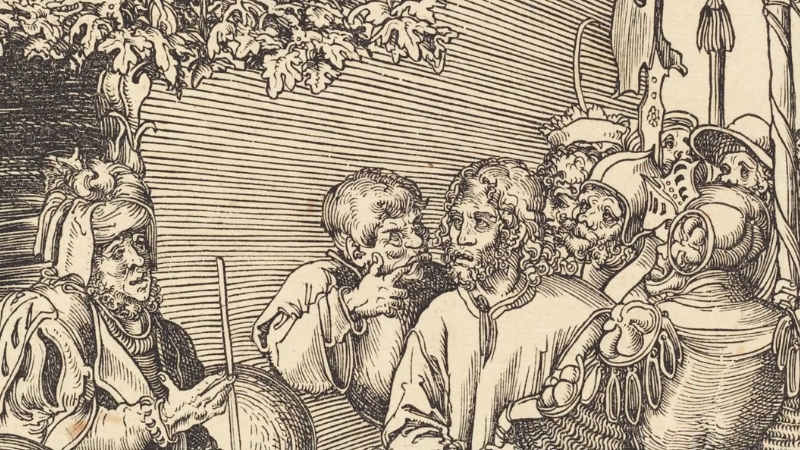
The result is bold, high-contrast prints with a distinct grainy charm. Every line carries the texture of the wood—each print is a literal impression of the artist’s labor.
In modern times, xylography has seen a revival among indie artists and illustrators seeking analogue warmth and historic resonance. It’s a favorite for book covers, political posters, and limited-edition art prints.
What makes xylography so appealing today is its intimacy and imperfection. In a world saturated with digital slickness, these carved prints remind us of the craftsmanship behind communication.
9. Petrykivka Painting
Feature
Details
Also Known As
Petrykivka Decorative Folk Art
Origin/Inventor
Ukraine, 18th century (named after Petrykivka village)
Key Features
Bright florals, no preliminary sketches, traditional brushes
Known For
Decorative murals, household items, and spiritual symbolism
Notable Artists
Tatiana Pata, Fedir Panko
Modern Relevance
UNESCO Intangible Cultural Heritage, national identity
Petrykivka painting is more than just pretty florals—it’s a visual language that carries centuries of Ukrainian cultural identity.
Named after the village of Petrykivka, where the style was born, this folk art is known for its vivid colors, floral motifs, and rhythmic brushstrokes.
What’s remarkable about Petrykivka is the technique: artists don’t sketch anything beforehand.
View this post on Instagram
They paint directly with brushes made from cat hair or even their fingers. The motifs—roses, berries, birds—aren’t just decorative; they hold symbolic meanings tied to nature, fertility, and prosperity.
Traditionally used to decorate homes, furniture, and household items, Petrykivka art transformed into canvas-based expressions only in the 20th century. Its preservation was formally recognized by UNESCO in 2013.
Today, this style is being revitalized by contemporary Ukrainian artists who merge tradition with modern themes, proving that folk art can evolve without losing its roots.
10. Tanbo Art (Japan)
Feature
Details
Also Known As
Rice Paddy Art
Origin/Inventor
Inakadate Village, Japan, 1993
Key Features
Colored rice varieties planted to form massive field illustrations
Known For
Gigantic seasonal art visible only from above
Notable Artists
Local Japanese villagers, agricultural cooperatives
Modern Relevance
Community art, rural tourism, cultural storytelling
Tanbo Art, also known as rice paddy art, turns entire fields into canvases. This art form was born in Inakadate Village, Japan, where local farmers and artists collaborated to fight rural decline by blending agriculture with creativity.
Using multiple strains of rice plants, each with different colors and growing times, they craft enormous, detailed images—ranging from historical portraits to pop culture icons.
But here’s the twist: the art only makes sense when viewed from a tall structure, like an observation tower.
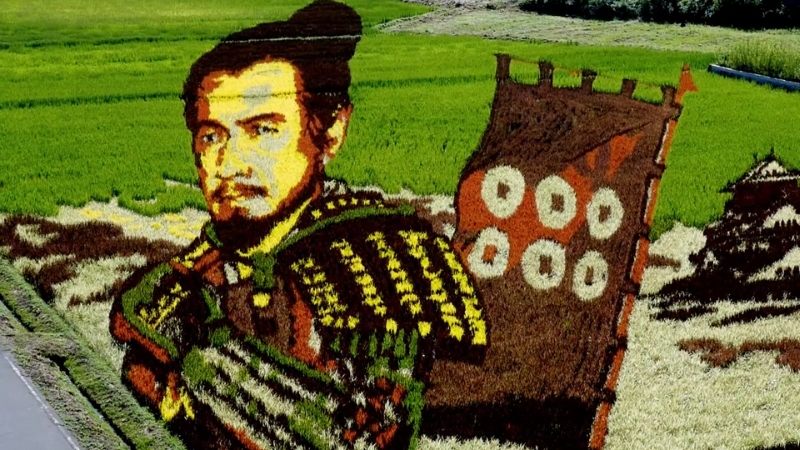
At ground level, it’s just a patchwork of plants. From above? It’s a masterpiece with pixel-perfect precision, achieved without digital screens.
Tanbo Art is a model of community collaboration, cultural preservation, and artistic innovation.
Every year, villagers come together to design and plant new artworks, showcasing not only their farming heritage but also their adaptability.
11. Reverse Glass Painting
Feature
Details
Also Known As
Verre Églomisé (when gilded), Hinterglasmalerei (in German)
Origin/Inventor
Ancient Rome, popular in 18th- 19th century Europe and India
Key Features
Painting on the back of glass; seen from the front
Known For
Iconic religious art, vibrant colors, gilded details
Notable Artists
Indian artists from Rajasthan, Bavarian painters
Modern Relevance
Decorative folk art, sacred art, restoration projects
Imagine painting a portrait… backward. That’s the essence of reverse glass painting, a technique where artists paint on the backside of a glass sheet so that the image is viewed from the opposite side.
This ancient and intricate method demands that artists apply highlights first and backgrounds last—a complete reversal of traditional painting logic.
The origins of this technique trace back to ancient Rome, but it flourished in places like Bavaria, Austria, and India, where it was used to create religious icons, royal portraits, and decorative panels.
In India, especially in regions like Rajasthan and Tanjore, reverse glass was often combined with gold leafing and bold color palettes.
What makes it fascinating is not just the visual result, which is often vibrant, luminous, and nearly jewel-like, but the mental discipline required to layer details in reverse.
In a modern context, reverse glass painting has found a home in folk art revivals, spiritual decor, and high-end craftwork, reminding us that sometimes, the best way to see the world is from the other side.
12. Cloisonnism
Feature
Details
Also Known As
Post-Impressionist Flat Color Art
Origin/Inventor
Émile Bernard & Louis Anquetin, late 1880s
Key Features
Bold flat colors, thick outlines, no shading
Known For
Early modern abstraction, symbolic expression
Notable Artists
Paul Gauguin, Émile Bernard, Louis Anquetin
Modern Relevance
Comic art, graphic design, neo-symbolism
Cloisonnism may sound like a niche term, but it’s a quiet giant in the history of modern art. Named after cloisonné, a technique of enamel decoration involving metal borders, cloisonnism in painting features bold fields of color separated by dark outlines. It rejects realism in favor of symbolic expression and visual impact.
View this post on Instagram
Invented in the 1880s by Émile Bernard and Louis Anquetin, the style heavily influenced Paul Gauguin, who used it in his mystical depictions of Tahitian life. It was a rebellion against the light and airiness of Impressionism, favoring instead solid, flat color blocks that spoke to emotion and spirituality.
Cloisonnism is often considered a precursor to modern abstraction, graphic novels, and poster art. Today, its DNA is visible in everything from comic book aesthetics to pop art, making it one of those quiet revolutions that never really ended.
13. Zentangle
Feature
Details
Also Known As
Meditative Doodling
Origin/Inventor
Rick Roberts & Maria Thomas, USA, 2003
Key Features
Structured repetitive patterns (“tangles”), no erasing, meditative
Known For
Stress relief, mindfulness, abstract pattern creation
Notable Artists
Anyone can be a Zentangler!
Modern Relevance
Art therapy, journaling, and classroom creativity
Zentangle isn’t just doodling—it’s mindfulness in motion. Developed in the early 2000s by Rick Roberts and Maria Thomas, the method was created to offer a structured but calming art practice.
Zentangle consists of drawing repetitive patterns (called “tangles”) on small square tiles—with no erasers, no judgments, and no mistakes.
Theme – Riddhi’s artwork is inspired by the Zentangle style of drawing. Created by Rick Roberts and Maria Thomas, Zentangles are a miniature abstract work of art created by a collection of patterns.
Artist – Riddhi Goel, Grade 3C pic.twitter.com/njYbPO7FDi— GenesisGlobalSchool (@GenesisGSchool) September 2, 2018
Every pattern emerges spontaneously, encouraging flow and presence. There’s no “finished product” pressure—just the joy of moving a pen across paper. For this reason, Zentangle has found massive appeal in art therapy, schools, and personal mental wellness routines.
Its simplicity is its genius. With just a pen, some shapes, and an open mind, Zentangle offers a peaceful rebellion against digital overload. It’s art for everyone, everywhere.
14. Scrimshaw
Feature
Details
Also Known As
Sailor Etching
Origin/Inventor
18th-century sailors, mostly American and British whalers
Key Features
Carvings and engravings on whale bone, ivory, or teeth
Known For
Nautical scenes, personal keepsakes, storytelling art
Notable Artists
Anonymous sailors; later folk artists
Modern Relevance
Maritime museums, folk art revivals (with ethical material substitutes)
Scrimshaw is what happens when art meets salt, solitude, and the sea. This intricate form of engraving was born on long whaling voyages in the 1700s, where sailors passed time by carving detailed scenes onto whale bones, walrus tusks, or ivory teeth.
With just a needle or pocketknife, they etched everything from ship portraits to love letters—tiny narratives of longing, adventure, and survival.
While traditional scrimshaw uses now-protected materials, modern artists often replicate the style using resin, bone substitutes, or antlers. Despite the shift in materials, the storytelling heart remains unchanged.
Today, scrimshaw is treasured as a form of folk heritage, especially in maritime cultures. It reflects a raw human need to create beauty—even amid hardship—and stands as a historic link between craft and survival.
15. Trencadís (Catalonia, Spain)
Feature
Details
Also Known As
Mosaic Smash Art, Broken Tile Mosaic
Origin/Inventor
Popularized by Antoni Gaudí, early 20th century
Key Features
Mosaic using broken ceramics, glass, tiles
Known For
Colorful public art, surreal architecture
Notable Artists
Antoni Gaudí
Modern Relevance
Sustainable design, public installations, street art
Trencadís is Catalan for “chopped,” and that’s exactly what this mosaic art is all about—breaking things beautifully. Popularized by Spanish architect Antoni Gaudí, especially in landmarks like Park Güell in Barcelona, trencadís uses fragments of broken tiles, ceramics, glass, and pottery to create dazzling, swirling, dreamlike mosaics.
@bcnlocalexperiences Most beautiful buildings by Antoni Gaudí that you need to visit in Barcelona 😍💯 📍Casa Batlló 📍Park Güell 📍Casa Vincens 📍La Pedrera 📍Sagrada Família 📍Torre Bellesguard 📍Palau Güell #buildingsbygaudi #antonigaudibarcelona #casabatllo #parkguell #lapedrera #casavincens #lasagradfamilia #sagradafamiliachurch #palauguell #torrebellesguard #barcelonalocalexperiences #barcelonaphotospots ♬ original sound – Barcelona Local Experiences
Unlike traditional mosaic art, trencadís doesn’t rely on uniform pieces. It thrives in imperfection and spontaneity, much like jazz in visual form. The result is an aesthetic that feels alive, full of movement, color, and texture.
Today, trencadís lives on in public parks, plazas, community murals, and the hands of artists who believe that broken things can still make beauty.
16. Wazarashi Art (Japan)
Feature
Details
Also Known As
Weathered Fabric Art
Origin/Inventor
Traditional Japanese textile technique
Key Features
Fabrics exposed to the elements (sun, wind, snow)
Known For
Naturally faded colors, time-based transformation
Notable Artists
Various traditional artisans
Modern Relevance
Slow art, nature collaboration, wabi-sabi aesthetics
Wazarashi art embraces one radical idea: step back and let nature finish the work. Originally a method of bleaching and preserving cotton fabrics in Japan, Wazarashi has evolved into a minimalist, meditative form of textile art.
Artists expose cloth to the elements over long periods—sun, wind, snow, rain—and allow these forces to leave marks, fade colors, and form patterns that no hand could imitate.
This technique reflects the traditional Japanese philosophy of wabi-sabi, which celebrates imperfection, impermanence, and the beauty of time. Each piece is unique, not because it was designed that way, but because nature was part of the process.
In today’s fast-paced, hyper-digital world, Wazarashi reminds us to slow down and collaborate with the environment, allowing art to breathe and evolve on its timeline.
17. Data-Moshing
Feature
Details
Also Known As
Glitch Art, Compression Art
Origin/Inventor
Emerged from video editing experiments in the 2000s
Key Features
Visual distortions, frame blending, digital “glitches”
Known For
Trippy video art, music videos, digital expression
Notable Artists
Takeshi Murata, Rosa Menkman
Modern Relevance
Internet art, post-digital aesthetics, visual hacking
Data-moshing is a digital art form that turns video corruption into creative gold. It involves manipulating video compression—especially the transitions between frames—to produce trippy, fluid distortions where objects melt into each other, or images collapse into pixel chaos.
What once was a tech failure is now a legitimate aesthetic movement.
Artists like Takeshi Murata and Rosa Menkman have pushed the boundaries of this style, turning visual noise into narrative. It’s chaotic, hypnotic, and often unsettling—a rebellion against digital perfection.
This glitchy genre mirrors our fragmented attention spans, echoing the digital anxiety of the internet age. It also raises big questions about permanence, data, and how technology reshapes how we see reality. In a world of high-definition and algorithmic polish, data-moshing proudly celebrates errors.
18. Suminagashi (Japan)
Feature
Details
Also Known As
Japanese Marbling
Origin/Inventor
12th-century Japan
Key Features
Floating ink on water, transferred to paper
Known For
Organic, flowing patterns, calligraphic beauty
Notable Artists
Monks and calligraphers (historical), contemporary marblers
Modern Relevance
Bookbinding, printmaking, art therapy
Suminagashi, which translates to “floating ink,” is Japan’s ancient marbling art—and it’s as calming as it sounds.
Artists drop ink onto the surface of still water, guiding the ripples with breath or subtle movements. Once the pattern feels right, it’s carefully transferred to paper, preserving the moment forever.
Learn the traditional Japanese technique of ‘suminagashi’ (floating ink)🖌️
Join artist Naomi Ellis on Saturday 6 April to create your own marbled papers using suminagashi inspired by our exhibition Myths to Manga: https://t.co/KMBGOV44oy
— Young V&A (@young_vam) March 20, 2024
Dating back to the 12th century and often practiced by Zen monks, Suminagashi is more than an art—it’s a meditation. Each swirl, each ring, reflects balance, impermanence, and harmony with nature.
Today, Suminagashi enjoys a revival in modern book arts, journaling, and printmaking. It’s a beautiful reminder that sometimes, the most profound art arises from letting go of control and flowing with the process.
19. Ainaism (Nigeria)
Feature
Details
Also Known As
Personal Art Philosophy
Origin/Inventor
Nigerian artist Aina (self-styled)
Key Features
Self-defined, deeply individualistic, often Afrocentric
Known For
Not yet a movement—unique artistic identity
Notable Artists
Aina
Modern Relevance
Highlights how movements begin, hyper-personal expression
Ainaism isn’t a recognized global genre—yet. It’s a personal art philosophy coined by Nigerian artist Aina to define their creative vision. But here’s what makes it fascinating: this is exactly how art genres begin.
Movements like massurrealism and thinkism started when artists created names to describe their unique perspectives. If others resonate with that style, it evolves into a community.
View this post on Instagram
Ainaism reminds us that every genre begins as one person trying to name the unnameable—to express what makes their work distinct.
In the age of hyper-personal branding, Ainaism represents a broader trend in contemporary art: self-defined identity, cultural ownership, and a refusal to fit into existing boxes.
Final Words
Art is alive. It evolves, reinvents, rebels, and reconnects. From rice paddies turned into pixelated fields in Tanbo Art to the digitized subconscious of Gan-ism, these 20 unique art styles prove one thing: creativity has no rules—it only has rhythm.
In the midst of it all, Geometric Cubism Abstract Art challenges perception, breaking down the familiar into sharp angles and fragmented perspectives.
You’ve now traveled through centuries, cultures, and canvases—some painted with ink, others with algorithms. Whether you’re an artist looking for inspiration, a collector chasing the next frontier, or someone who just wants to drop “Petrykivka” at a dinner party, you’re officially in the know.
My Favorite?
It has to be Massurrealism.
Why? Because it feels like a mirror held up to our daily lives—glitchy, overloaded, kind of surreal, and deeply digital. It’s the art that doesn’t try to escape our screen-heavy world—it dives right into it, pixels first.
Now it’s your turn:
Which of these speaks to you?
Better yet, which one will you create next?
